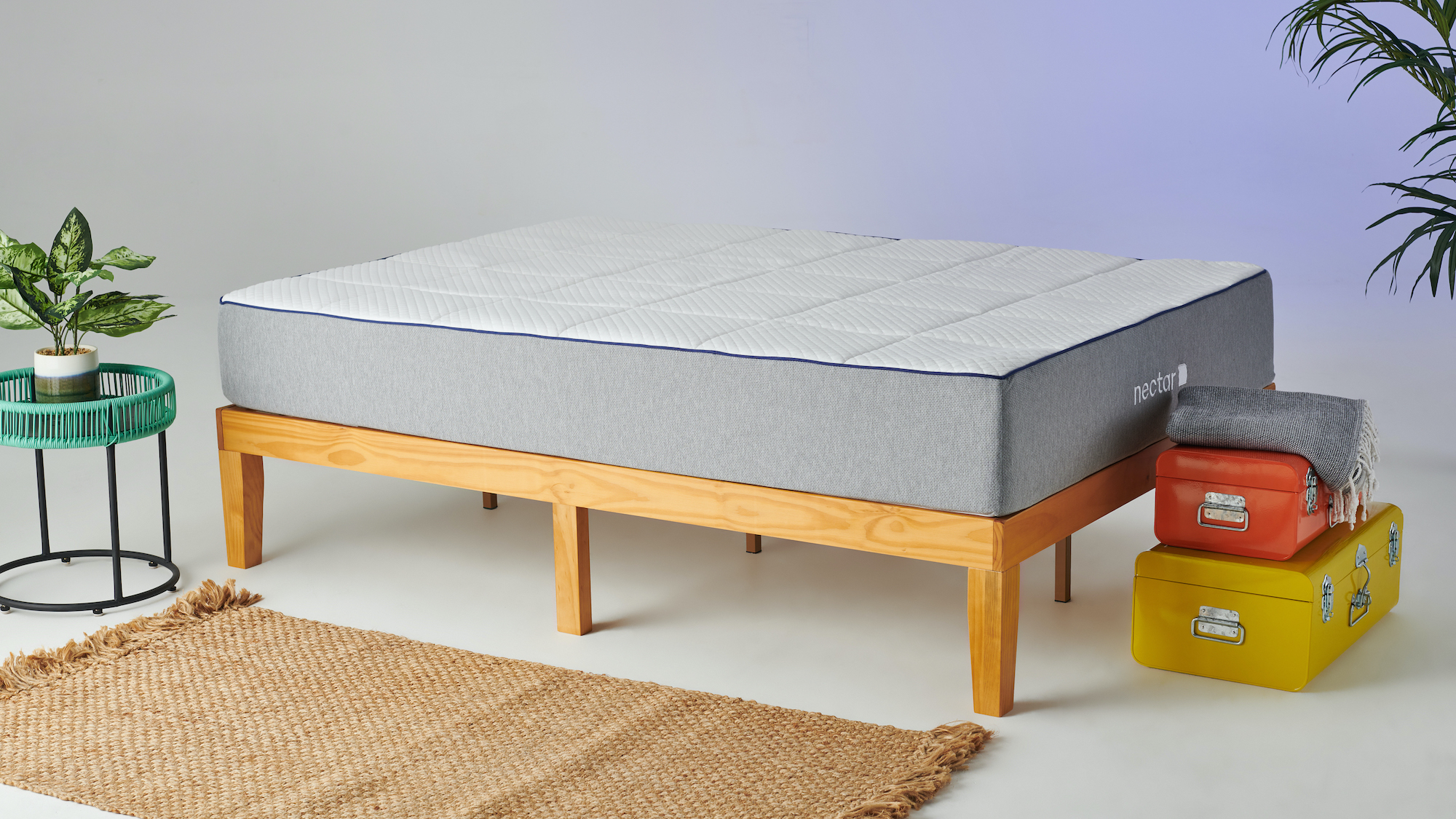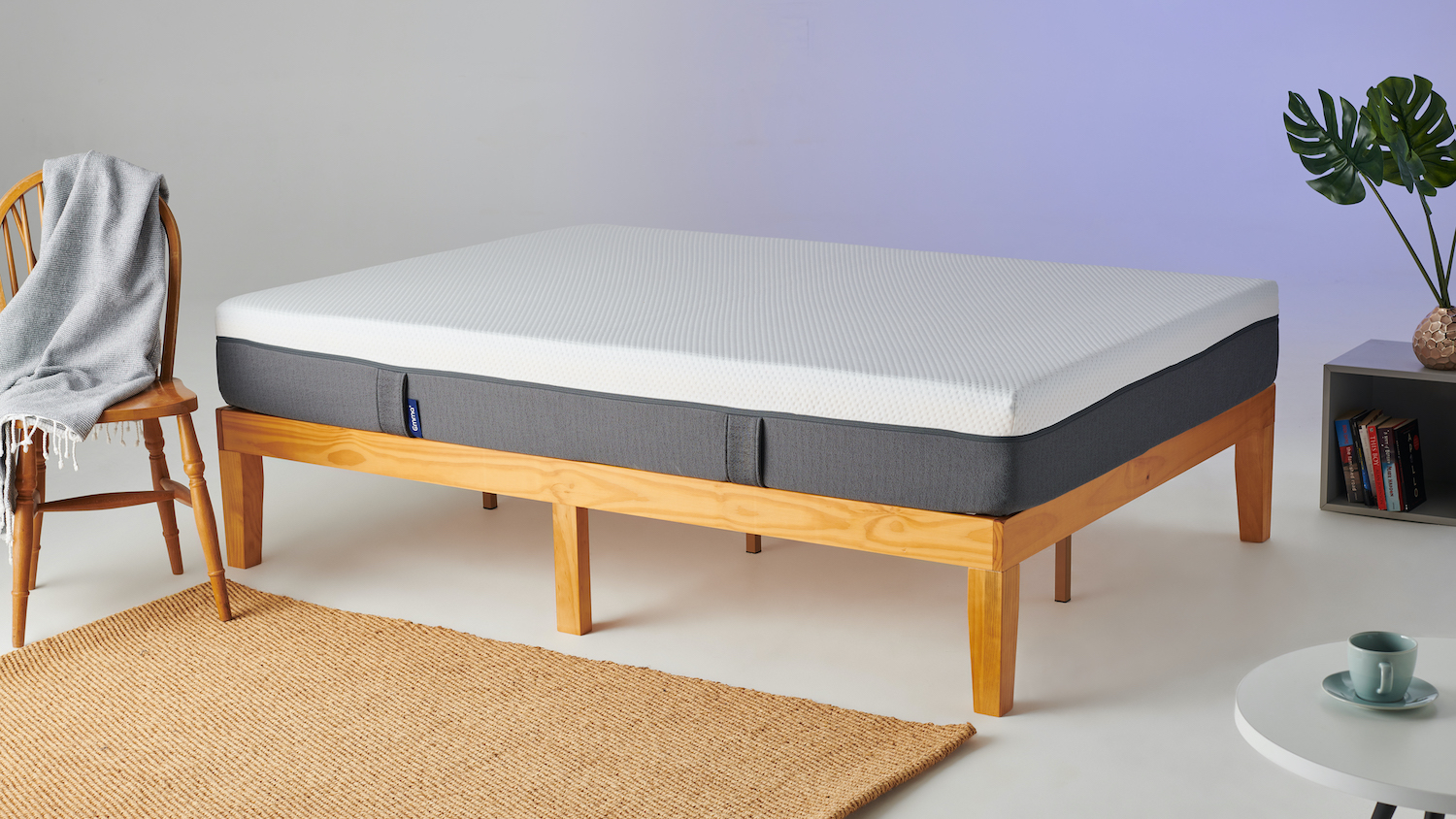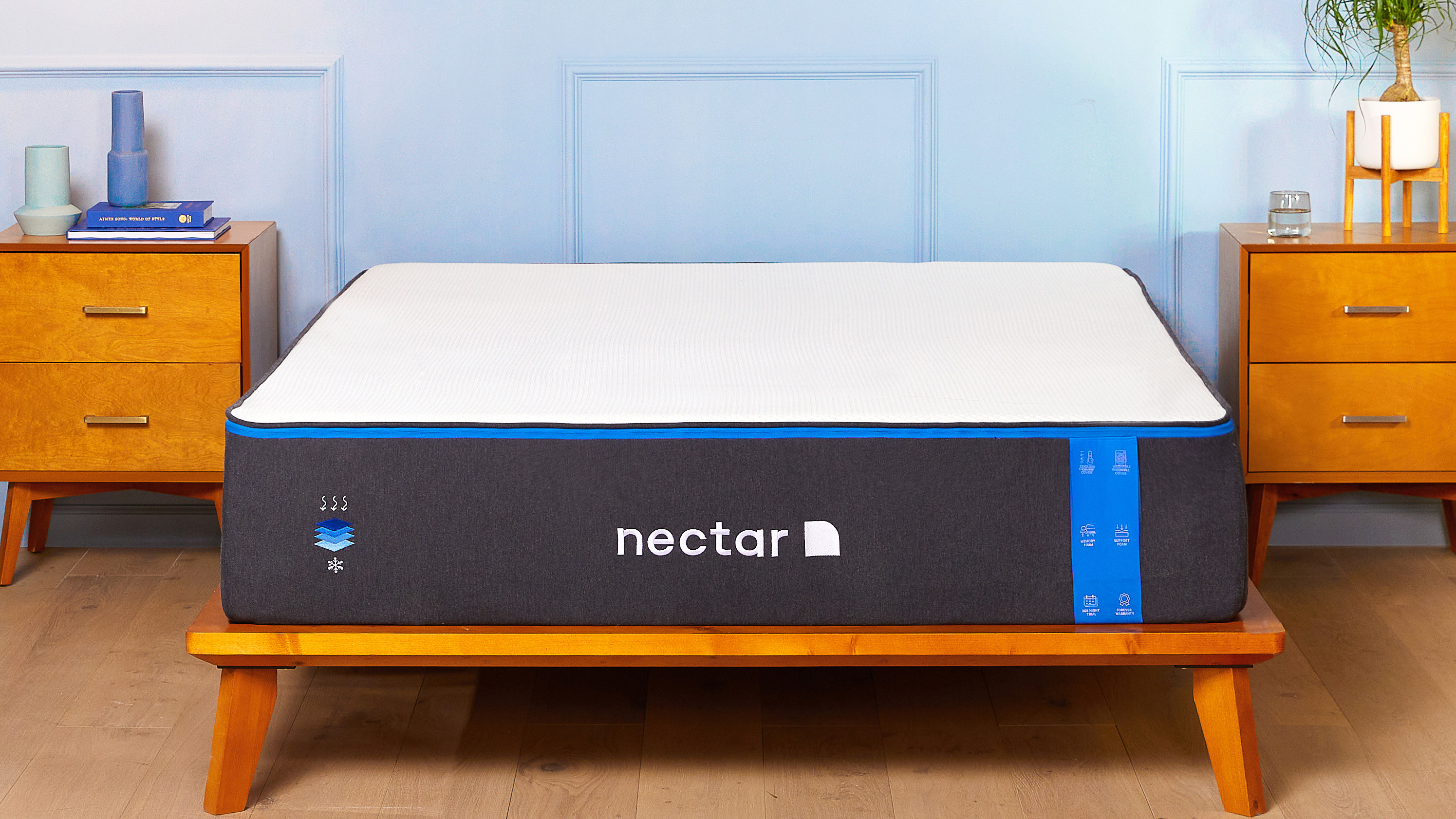What is a memory foam mattress and do you need one?
If you like sinking into a mattress, memory foam is the best option for you

When it comes to mattress materials, memory foam is popular with people looking to ease aches and pains during sleep. It’s designed to contour to your body and provide a ‘body hug’ feel that many people find comforting. Some people find memory foam quite claustrophobic though, so these beds certainly aren’t for everyone.
Our best mattress guide features several memory foam models from leading brands such as Nectar Sleep and Cocoon by Sealy. We’ve crowned the Nectar the best memory foam mattress overall because it’s comfortable, breathable and excellent value for money.
So if you’re thinking of getting one of these beds and you want to know what a memory foam mattress is, how they’re made, and what they’re like to sleep on, read on now for our expert insight.
What is a memory foam mattress?
A memory foam mattress is made of multiple layers of different types of foam. The aim of this type of bed is to contour to your curves during sleep, alleviating pressure points (such as on your back, shoulders and hips) and reducing general aches and pains. They do this by using your body heat to soften the material and shape it to your body for better support and comfort.
Nearly all bed manufacturers have a memory foam model in their range, and these beds are usually cheaper than hybrids (read our feature on what is a hybrid mattress to learn the difference between memory foam vs hybrid mattresses).

So if you have a smaller budget, you’re probably looking at an all-foam option rather than a more expensive hybrid. However there are exceptions to that, depending on what mattress sale offers are running. Another budget-friendly option is to add a memory foam topper to change the sleep surface feel. Many of today's best mattress toppers are made of memory foam.
- What is a mattress in a box? Key info explained
- What is a hybrid mattress and is it the right choice for you?
- What is a memory foam mattress and should you buy one?
What are memory foam mattresses made of?
A memory foam mattress is made of memory foam, first and foremost. This material (also known as visco-elastic foam) is made from polyurethane and was developed by NASA in the 1960s for its astronauts.
Depending on the model you opt for, these beds are either made of just memory foam, or memory foam plus gel-infused foams – popular in the best cooling mattresses for hot sleepers – and coils or springs. The latter would then make them a hybrid foam design.
Basic all-foam beds usually have three layers, while premium designs have five layers or more. On average, here’s what you’ll find in a memory foam mattress:
Cover - As foam beds retain heat, the covers are usually designed with breathable and heat-wicking materials. Some are more effective than others.
Comfort layer - This is the top section, usually constructed from one or more foam layers to provide contouring and cushioning. Softer beds have more comfort layers than firmer ones.

Transition layer - You’ll find this layer sandwiched between the top and bottom, and one of its main jobs is to wick away heat and keep the bed feeling cooler.
Core / base - This is the base of the mattress, made from firm foam, and it’s the tallest part too. Whereas hybrids use coil or springs to add support and sturdiness, here it’s done using very firm foam.
How much do memory foam mattresses cost?
In the UK and US, memory foam mattresses normally cost much less than hybrids, unless you’re buying a premium model. However all-foam beds are more expensive than traditional innerspring models, but you can still pick them up from around $170 / £250.
Advances in material and packaging technologies have also led to cheaper prices, and many of these mattresses come with free gifts, such as bedding bundles, to boost their value for money.
In the US, one of our top-rated picks, the Nectar, is priced from just $399. A queen size costs $799 and it comes with $499 of free bedding. For hot sleepers, we recommend the Cocoon by Sealy Chill cooling bed, which is the same price as the Nectar but it comes with just $199 of free gifts. To learn more about those models, read our Nectar mattress review and our Cocoon by Sealy Chill mattress review.
In the UK, memory foam is among the cheapest types of mattress, with the exception of sprung models. Emma Sleep makes a superb memory foam bed with a lower starting price of just £247 (read our Emma Mattress review to learn why we love it). There are more affordable models still from the likes of Silentnight.
Our best cheap mattress guide features a few great memory foam beds, with Zinus, Linenspa and Brooklyn Bedding serving up the lowest prices. Luxury memory foam beds can cost thousands, especially handcrafted beds. You’ll find these from the likes of GhostBed, Saatva, Brook + Wilde and Tempur-Pedic.
The best organic mattresses made with fully certified organic materials usually cost the most, especially the luxury models. (Read more about what is an organic mattress.)
What are the benefits of all-foam mattresses?
Memory foam mattresses offer plenty of benefits to your sleep comfort, as long as you enjoy this type of bed. The benefits include:
Instant comfort and support - Because memory foam contours to your body when you lie on it, you’ll feel a certain level of sinking in. Some people describe this as making them feel weightless during sleep. Your spine should always be aligned, but if you’re a stomach or back sleeper and notice dipping in your lower back, you need a firmer bed.

Pressure relief - Memory foam distributes your body weight evenly across the entire surface as a way to reduce pressure on your main impact points. That’s why people with joint pain love memory foam.
Motion isolation - They isolate motion transfer from you to your partner and vice versa. They do so to a higher level than hybrids, making them an excellent choice if you share with a restless sleeper. However people with mobility requirements may find it harder getting up from an all-foam bed as a lot of them lack robust edge support. You can also feel a bit wedged in.
Anti-dust mite design - The visco-elastic structure of memory foam is naturally impenetrable by dust mites. That alone makes it a good choice for people with allergies.
How thick is a memory foam mattress?
The thickness of a memory foam mattress can range from 6” up to 16”. 10” is the average height for this mattress in a box. Luxury and custom beds can often be made much taller. One of the tallest hybrid foam mattresses we’ve tested is the DreamCloud, standing at 14” tall (read our DreamCloud mattress review for more specs).
As a general rule of thumb, heavier bodies and side sleepers will benefit from a taller memory foam mattress. That’s why our best mattress for side sleepers of 2022 is a hybrid memory foam model, the Helix Midnight (check out our Helix Midnight review to learn more).
Here are some thicknesses of popular all-foam beds:
- Nectar - 12”
- Emma Original - 9.8”
- Cocoon by Sealy Chill - 10”
- Tempur-Pedic Tempur Original - 8.2” to 11.8”
- Saatva Modern Foam - 11”
- Zinus Green Tea Memory Foam - 6” t0 12”
- Casper Original - 11”
- Tuft & Needle Original - 20”

How long do they last?
Depending on the quality, a memory foam mattress can last for six to ten years. That’s quite the difference and it depends on the grade of materials used to make it. Cheaper models obviously won’t last as long, while premium all-foam beds are made with more durable materials capable of withstanding several years or more of heavy use. You can dig into this more in our feature answering how long does a mattress last.
Most mattress warranties are for 10 years, but some, such as the ones from DreamCloud, Nectar Sleep, Saatva, WinkBed and organic mattress brand Awara are lifetime warranties. That means you’re usually entitled to at least one free full replacement, or at least free repairs to fix problems such as sagging.
How often you should replace a memory foam mattress can depend on how well you take care of it. To help yours last longer, do the following:
- Use one of the best mattress protectors to safeguard from stains
- Learn how to clean a mattress properly to help it last
- Rotate it every three months to spread out wear and tear
Who should buy a memory foam mattress?
From our experience, most sleepers will enjoy an all-foam bed. That’s because they’re highly contouring (they hug the body) and are usually softer. If the following resonates with you, you’ll enjoy sleeping on memory foam:
- You like the feeling of being hugged by your mattress
- You like softer to medium-firm beds
- You share with a restless sleeper and want high motion isolation
- You sleep cold and want a bed that sleeps a bit warmer
- You’re a side sleeper seeking hip and knee cushioning
- You want deep and constant pressure relief
- You have multiple aches and pains during sleep

Who shouldn’t buy a memory foam mattress?
As we mentioned at the start of our article, memory foam won’t suit everybody. Particularly so if the following resonates with you:
- You dislike sinking into a mattress and prefer sleeping on top
- You like medium-firm to firm beds
- You have a heavier than average body that needs more support
- You are a stomach or back sleeper of average or heavier weight
- You overheat at night and need a more breathable mattress
- You enjoy a bouncier, more responsive bed
- You need strong edge support to make getting up easier
A memory foam mattress can make a big difference to any pain you feel when sleeping, especially if you’re dealing with hip or back pain. They aren’t a magic bullet though, so you may need to invest in one of the best mattress toppers for adding extra comfort on top.
We’d also recommend looking for a plush Euro or pillow top all-foam bed for maximum cushioning. And if you sleep hot, look for cooling materials such as graphite. For this year’s top recommendations see our best memory foam mattress guide.
Sign up to get the BEST of Tom's Guide direct to your inbox.
Get instant access to breaking news, the hottest reviews, great deals and helpful tips.

Claire is a Certified Sleep Science Coach and the Senior Sleep Editor at Tom's Guide who curates our mattress buying guides and oversees our rigorous mattress testing procedures. Claire has over 16 years’ product review experience and is connected to a wealth of globally renowned sleep experts including mattress designers and buyers, neuroscientists, and doctors of sleep medicine. Claire is responsible for all mattress and sleep content published on Tom’s Guide and is our expert on Saatva, DreamCloud, and Nectar mattresses. Claire is also certified to advise people on how to choose a mattress that suits their needs and budget, as well as helping them to create a nighttime routine and bedroom environment that helps them sleep better.
